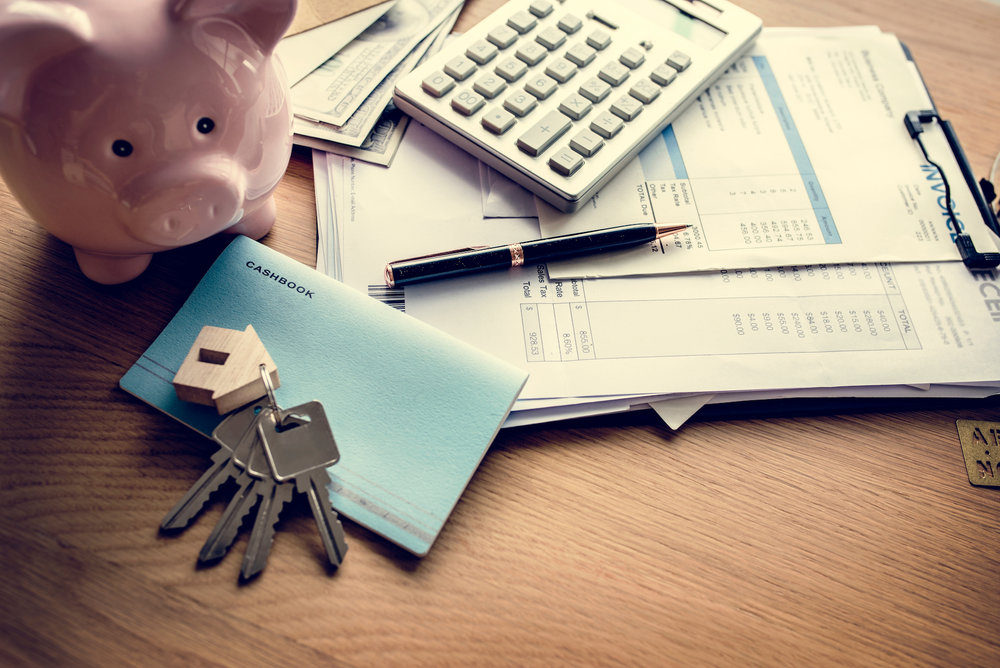How Much Should You Pay for Rent? It’s Complicated.

Moving soon? Get organized with our free moving checklist.
You’re moving and putting together a budget, but just how much should you pay for rent? Whether you are moving to a new town, changing jobs or just want to get a better hold on your finances, you’ll want to know roughly how much you should pay for rent depending on your lifestyle and location. When it comes to discovering how much you should pay for rent, finding the sweet spot can save you some frustration down the line. Follow these steps to find out how much you should pay for rent, where you are willing to compromise, and where you aren’t.
Step 1: Do Some Online Apartment Hunting
Rental prices tend to fluctuate based on a number of variables including neighborhood, amenities, and season. Spend some time searching online for homes that you really like in the area you hope to move. While you search, it’s a good idea to take note of what you can get in various areas and price brackets. Plug your wishlist into different search sites and see what comes up. You may not get the dishwasher, gym, storage space, and eat-in kitchen, but you will get a better sense of how much your dream rental costs and what you want most in a home.
Step 2: Look at Your Finances
What are your spending habits?
Before you can determine how much you should pay for rent, you have to be aware of your cash flow. Create a budget spreadsheet that lists the money you have coming in and going out. Be sure to include all of your expenses, from student loans to cat litter. If you plan to purchase renters insurance, be sure to list that too.
If you are moving out of your parents’ home, estimate your monthly payments for electricity, gas, internet, and cable. If you are already out on your own, remember to add these monthly expenses to your spreadsheet.
When you record your monthly income, go ahead and take note of what you take home after taxes. It might be tempting to calculate your budget before taxes but you could end up short by up to 37% at the end of each month. Taxes aren’t fun but they will be taken out, so you should always include them in your budgeting plans.
Now that you have your budget ready to go, you can tackle the real question: how much should you pay for rent according to this budget? To start, you can use an affordability calculator, but you will want to get more specific with your calculations down the line to ensure you find the right price for your personal lifestyle.

How much do you have saved for upfront costs?
Moving into a new rental can be very exciting and often very expensive. One way to judge how much you should pay for rent is by deciding how much you can afford to pay upon signing your lease. Most rentals require at least the first month’s rent upfront and one month’s rent for a security deposit.
If you go through a real estate agent, they may require a broker fee, generally ranging from 12-15% of the annual rent (depending on your location) and some landlords might also want the last month’s rent upfront. This means that if you find a rental for $1,500 a month, you will have to pay anywhere from $3,000 to $6,700 just to sign the lease.
Keep these costs in mind when you move. Your expenses will already be high if you are buying a new mattress or you just shipped your car across the country. Keeping yourself on a strict budget will help you avoid blowing through all of your savings before you’ve even moved in.
Step 3: Find Out if You Meet the 40x Requirement
On top of the upfront costs that come with signing a lease, most landlords need proof that tenants earn an annual income that’s at least 40 times the monthly rent. So if the rent is $2,000 a month, you would need to make at least $80,000 to be approved. This requirement will give you a ballpark figure for how much you should pay in rent before signing anything, so sticking to it could help ensure your monthly payments aren’t too much of a stretch.
If you’re in love with a place that is more expensive, however, you can get around the 40x requirement by asking a reliable friend or family member to be your guarantor. Make sure that they are aware of the commitment before they agree to anything since they will be obligated to cover your rent if you can’t make the monthly payments on time.

Step 4: Find Your Preferred Percentage
So, you have your budget and you’re prepared for the upfront costs, but how much should you pay each month for rent? Often, allocating a fixed percentage of your income to paying for rent is the way to go. Here are the two most popular percentage guidelines:
The 30% Threshold
You may have heard of this guideline before, given its popularity among people want to know how much they can afford to pay for rent. This number was chosen as part of the New Deal to figure out who was eligible for subsidized housing, and it has been a go-to ever since.
The idea behind the 30% threshold is that you do not spend any more than 30% of your gross income on rent. Though this sounds good in theory, it can be limiting depending on the size of your household and where you live.
Certain cities make it hard to stick to this 30% rule since their housing costs are so high. In San Francisco, for example, where the average annual rent is $42,000 and the average annual household salary is $96,677, renters pay over 43% of their household’s income on rent. Even still, they have an average of $54,677 to spend on all of their other lifestyle expenses. When you ask yourself how much you should pay for rent when you move to a new city or neighborhood, also ask how much the average apartment rents for in your future area.

The 50/20/30 Guideline
This is another great guideline to use while deciding how much of your income you should use to pay for rent. It is the most structured and inclusive of two rules, making it a perfect choice for people who like to see every dollar accounted for.
The main idea behind this model is that you break your earnings up into different categories – needs, savings and debts, and wants. In doing so, you ensure that you will have enough money to cover your expenses while also leaving a little spending money for yourself. By using this budgeting method, you can figure out how much you should pay for rent and how much to budget for your other expenses.
50%: Needs
Costs such as utilities, transportation, groceries, and of course rent are considered needs. But how much of this 50% should you be using for rent? You can use the 30% threshold here to calculate how much rent you can comfortably afford. Or, you can choose to go above or below the 30% guideline to find a percentage that works with all of your necessary costs and individual needs. It’s up to you.
If you want to be mathematical about it, find out what 50% of your monthly income is. Then, go back to your budget spreadsheet and add up all of your necessary purchases, excluding rent. Subtract their total amount from 50% of your pay, and whatever you have left over is how much you should pay for rent each month.

20%: Savings and Debts
Once you have an idea of how much you should pay in rent, you can move on to the other categories. This percentage covers any debt you might have and gives you an opportunity to define a savings category, including your 401(k) or any investment accounts you may have. If you follow this rule and do not have any debt, you might be tempted to put less than the full 20% into savings. The more you can save the better, though, especially when renting.
“Why?” you ask. If you have any desire to purchase a home, this monthly 20% will come in handy. Let’s break down the numbers. Say you bring in $2,000 a month and you are living debt-free. First off – congratulations! Second, you could save up to $19,200 by sticking to this budget plan for four years. In many parts of the country, that would meet the minimum requirements for a down payment.
Even if you do have a credit card to pay off or looming student loans, you can still save some money by putting just 3-5% of your income toward savings. Sticking with a monthly income of $2,000 you could save up to $1,200 a year, just by stashing a little away each month.
30%: Wants
Have you been eyeing those new shoes? Is your favorite band in town? You’re in luck! This category is for all of the things that you really want but can live without. It is important to prioritize when you get to this category. It can be the hardest to stay within, so make sure that you take care of the other two categories first to avoid tipping the balance out of whack and overspending. If you need new shoes, that is one thing. But if you have a perfectly good pair and already spent the 30% set aside for your wants, resist the urge to splurge.
Step 5: Stay Flexible
While there is no perfect answer for how much you should pay in rent, these guidelines give you strong parameters to experiment with and tweak to fit your own circumstances. Compromising on certain amenities could help you to live more comfortably in the long run, so stay flexible to find the system that works best for you.
Now that you know what you need to budget for, how to prioritize your expenses, and the different percentages you can use, go ahead and build your own rental budget plan!













